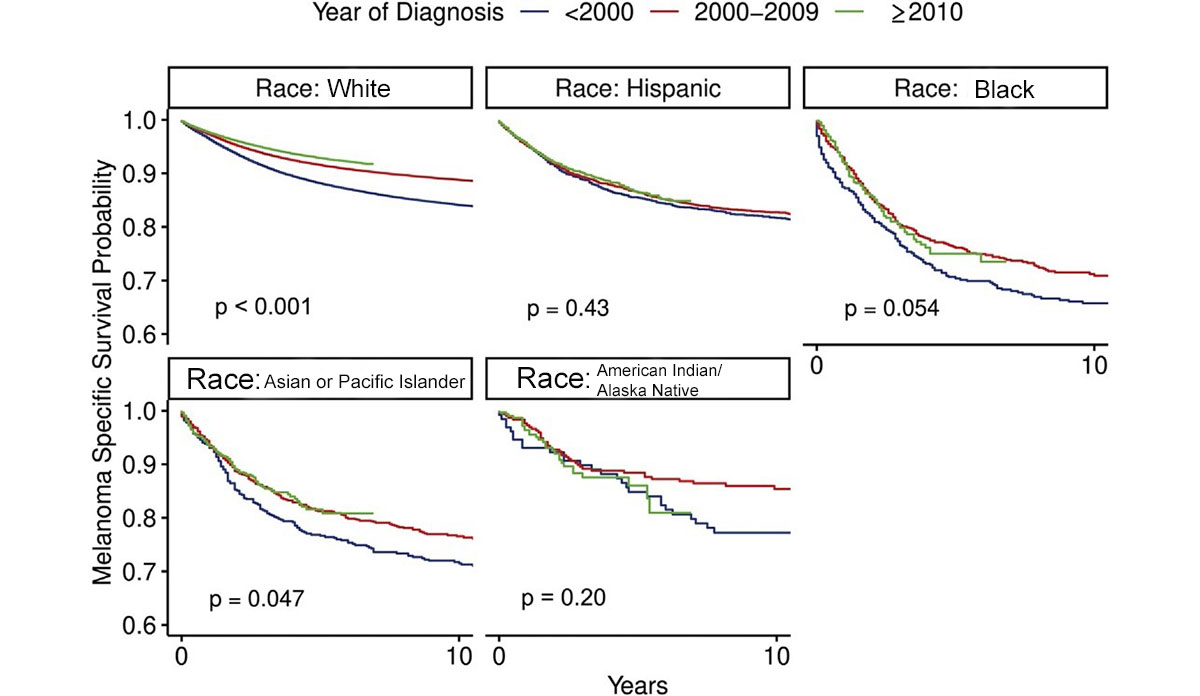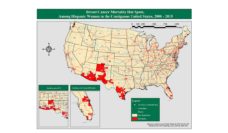Skin cancer is one of the most common and treatable cancers in the United States — if you’re White. White people have the highest incidence of skin cancer diagnosis, yet lower rates of melanoma-related death than people of color. A study found people of color had 2 to 3 times the risk of melanoma-specific mortality. One reason for this is that White Americans tend to get diagnosed at earlier stages of melanoma than other racial groups, which increases the probability of successful treatment and survival.
Skin conditions often go undiagnosed on darker skin simply due to inadequate medical training in detecting skin conditions on people of color. Harmful misconceptions could also bias a physician’s practice, such as people with darker skin not being at risk or needing to use sunscreen.
Skin cancer has seen significant developments in diagnosis and treatment over the last decade. Yingzhi Qian and colleagues wanted to know if melanoma-specific survival outcomes have improved for people of color since 2010 compared to previous decades.
Each graph shows the survival rate for a racial group over three time periods (1975-2000, 2000-2009, and 2010-2016). The represented groups are non-Hispanic White, Hispanic, Black, Asian-Pacific Islander and American Indian and Alaska Native. The green line in each graph shows skin cancer survival since 2010. White patients had the highest probability of survival; the survival discrepancy actually increased compared to before 2000 for Hispanic, Black and Asian or Pacific Islander populations.
Despite cancer treatment advancements, people of color continued to suffer worse melanoma-specific outcomes and have lower survival probability. Addressing barriers to healthcare and creating more racially inclusive medical curriculum may be steps toward equalizing skin cancer survival rates.
Databyte via Yingzhi Qian, Paul Johannet, Amelia Sawyers, Jaehong Yu, Iman Osman, Judy Zhong, The ongoing racial disparities in melanoma: An analysis of the Surveillance, Epidemiology, and End Results database (1975-2016), Journal of the American Academy of Dermatology, 2021.














